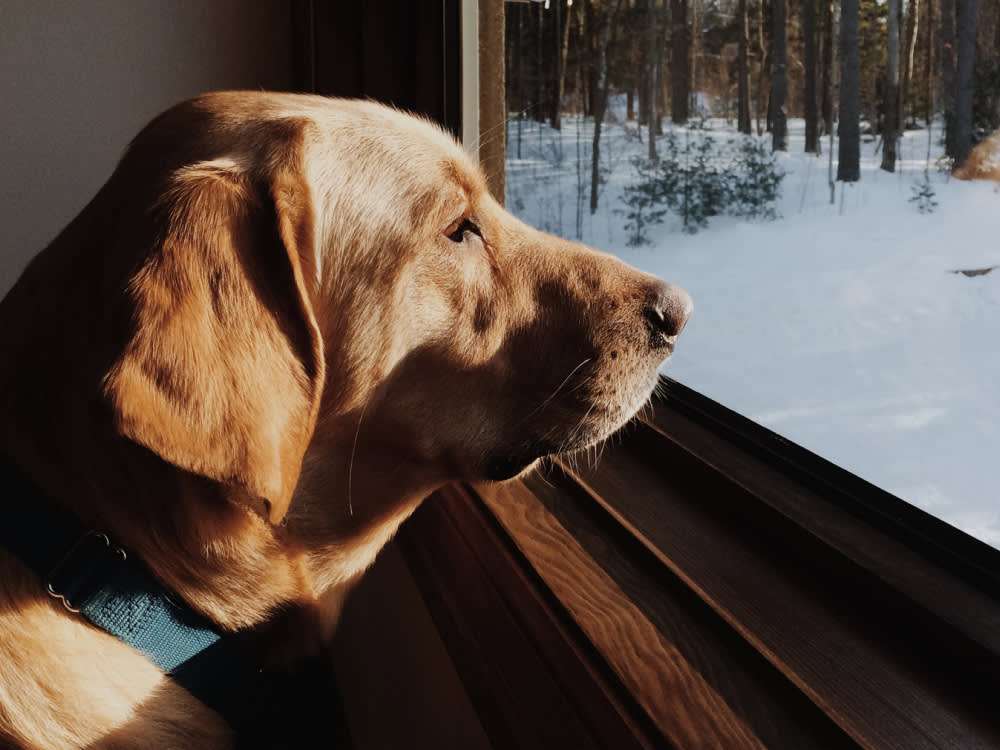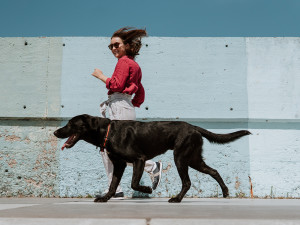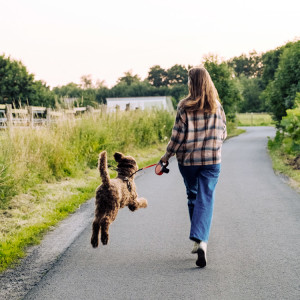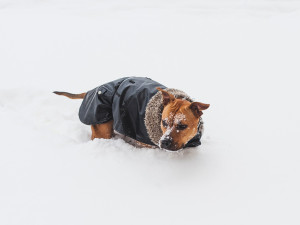Can Your Dog Suffer From Seasonal Depression?
Here’s why dogs may suffer from seasonal affective disorder, too
The new year is here, and with it, more winter. Temperatures have dropped, snow is falling, darkness descends in the afternoon, and for some, the winter blues are in full swing. Also known as seasonal affective disorder (SAD), the condition can express itself in humans as a lingering depression, fatigue and social withdrawal. But what about our canine companions – does the change in season also affect their mood? The short answer is: probably. The longer answer is a little more complicated.
“There’s a lot of confounding variables going on,” says Scott Sheaffer, a certified dog behaviour consultantopens in new tab based in Dallas, Texas. Scheaffer explains that what pet parents interpret as SAD in a dog might be a combination of physical factors as well as changes in human behaviour. Below, Sheaffer walks us through some of the possible signs of SAD in dogs, and what you can do to help bring some pep back into their furry step.
Can dogs feel depressed?
“Yes, they can,” says Sheaffer. “We don’t know that they’re actually depressed, of course, because we can’t interview them.” That being said, Sheaffer says it’s very likely they do experience something like depression, based both on their behaviour (like humans, depressed dogs tend to appear withdrawn, lethargic and disinterested) and the fact that dogs have been known to respond positively to antidepressants. “If you put those things together, you tend to think, yes, dogs are getting depressed.”
Similarly, while we can’t sit a dog down and ask them directly whether they feel the winter melancholy, Sheaffer points out that humans and dogs share certain chemical similarities, which would suggest dogs might be susceptible to the changing of the seasons. Like humans, dogs produce melatonin, a hormone that helps regulate one’s sleep cycle. When it gets dark outside, the body produces more melatonin, which creates a feeling of drowsiness. Scientists believe that an overproduction of melatoninopens in new tab when the days become shorter can contribute to SAD, and given that dogs produce the hormone as well, they may also be susceptible to the condition.
What are the signs your dog might be experiencing SAD?
According to Sheaffer, the biggest sign that your dog might be experiencing depression, seasonal or otherwise, is if they start seeming indifferent and lose interest in the things that previously brought them pleasure, like food, toys or playtime. “Pretty much what you would see in a human that’s experiencing depression,” he says.
Still, Sheaffer emphasises that you should rule out physical ailments before immediately assuming that your dog is depressed. Physical discomfort might cause a dog to act lethargic or disinterested, and it’s important to address any underlying physical issues before trying to address the emotional issues. “Could it be that your dog is sick?” he suggests. “We think dogs might get headaches. We know dogs have gastrointestinal issues... Could that be it? We have to rule out those things.”
What role do pet parents play in all of this?
“Dogs are extremely perceptive,” says Sheaffer. While you may not be able to sit down and have a conversation with your dog, they are attuned to the subtleties in your body language and facial expressions. So, if you seem more lethargic and depressed, your dog may also start to seem down. Dogs are also sensitive to changes in routine, so if, in an attempt to avoid the cold, dreary weather, you’ve been taking your pup out on fewer walks and exercising them less, they may start to feel anxious and bored.
Winter doesn’t have to mean perpetual gloom for you or your dog, though. It’s possible that less daylight means that pet parents are going out less and spending more time with their dogs, which would likely make their dogs happier. In short, dogs are always watching their owners for clues on how to behave and respond to their environment, so a change in their mood could be a reflection of a change in yours – positive or negative.
How can you help your dog if they seem depressed?
Whether you’re trying to prevent your dog from feeling depressed, or trying to help a dog who already seems to be displaying symptoms of SAD, Sheaffer says that physical and mental stimulation are the keys to boosting a dog’s sense of wellbeing. And if you’re not sure how best to keep them stimulated, he adds that you can never go wrong with a good old-fashioned walk, which engages a dog both physically and mentally.
“When you take a spirited walk, especially in cooler weather, do you ever feel worse when you come back?” Sheaffer asks. “No, you feel better. So does your dog.” So, while dogs may be sensitive to the changing seasons, as long as you keep them properly engaged, they’ll be OK. “Most dogs, if you put them in a cave without sunlight where they have enough stimulation, they’ll be fine.”










